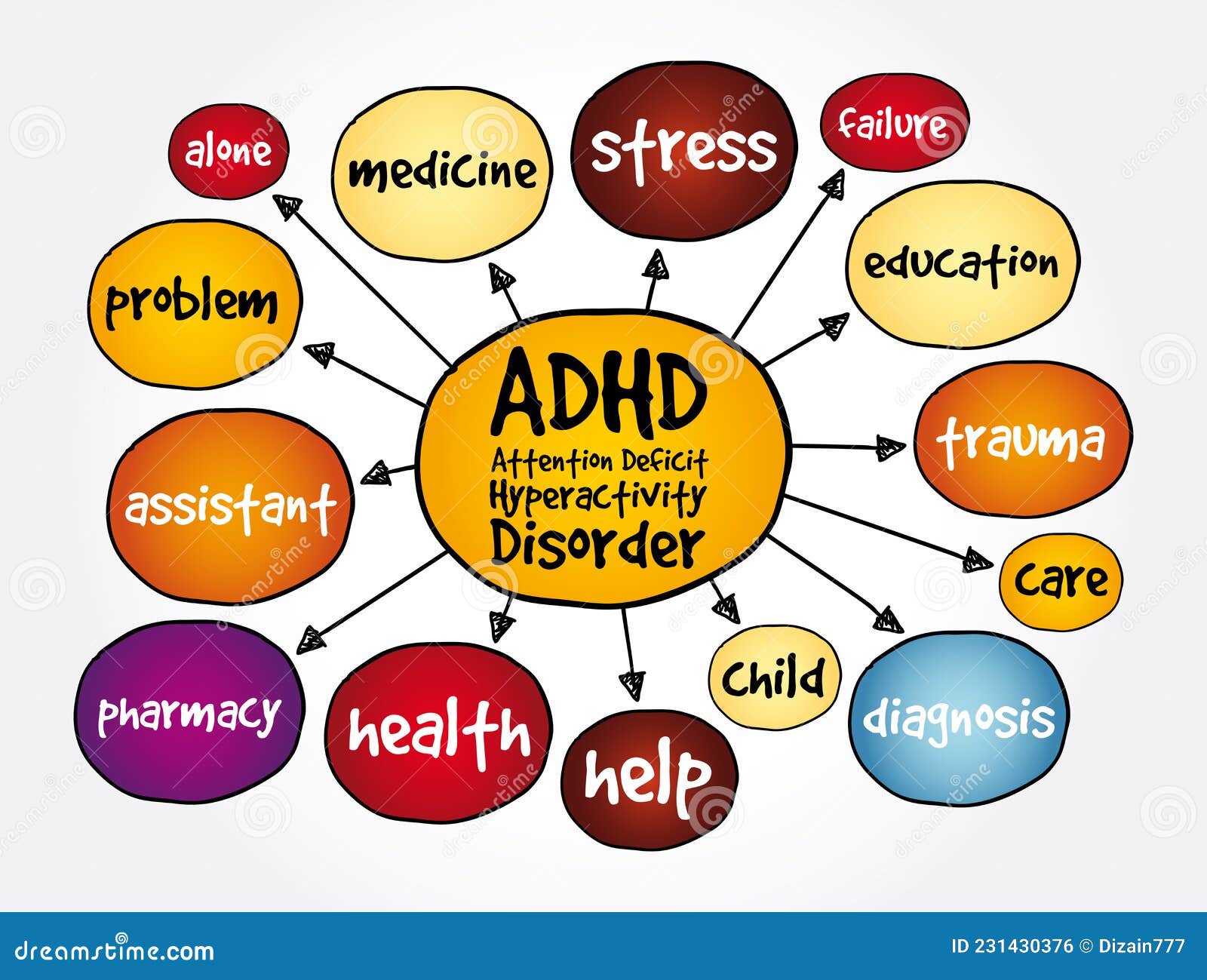Phillips-ADHD Concepts, Theories, and Models
Psychological Concepts, Theories, and Models of ADHD
Psychological
When it comes to ADHD, there has been growing evidence from scientists that genetics and several genes have been linked to this disorder. Outside of genetics, there is the concept of there being anatomical differences in the brains of individuals with ADHD compared to other children without the disorder. Being that ADHD can typically begin during childhood, the anatomical differences have been studied on children. For instance, children with ADHD have reduced grey and white brain matter volume and demonstrate different brain region activation during certain tasks (American Psychiatric Association, 2022). There have also been further studies have indicated that the frontal lobes, caudate nucleus, and cerebellar vermis of the brain are affected in ADHD (American Psychiatric Association, 2022). Overall, the causes of ADHD seen from a psychological viewpoint focus on the areas of the brain and how well they are able t function when doing certain tasks. For example, if a child with ADHD is having trouble with doing homework for a period of time for , there is the thought that their brain activity may be at a reduced rate compared to a child who is able to sit and do homework for an hour.
Theories
There is a theory surrounding ADHD called "The Dynamic Developmental Behavioral Theory" and this theory is based on the hypothesis that altered dopaminergic function plays a pivotal role by failing to modulate nondopaminergic (primarily glutamate and GABA) signal transmission appropriately (Sagvolden et al., 2005). In other words, this suggests that reinforcement and extinction processes are inefficient because of hypo functioning dopamine systems. This then results in a narrower window for associating stimuli and behavior with its consequences. This gives rise to delay aversion, development of hyperactivity in novel situations, impulsiveness, deficient sustained attention, increased behavioral variability, and failure to "inhibit" responses (Sagvolden et al., 2005). Knowing that ADHD includes symptoms of Inattentiveness, overactivity, and impulsiveness, these can be seen as delays within this theory due to the hypo functioning dopamine branch having an effect on how an individual is able to respond to certain activities.
Models
One model that is associated with ADHD is "The Cognitive-Energetic Model" which focuses on energetic factors as the most critical explanation of ADHD, proposing that the deficit of these factors leads to both inattention and hyperactivity symptoms. This model claims that the overall efficiency of information processing is determined by the interplay among three mechanisms at different levels. There is the lower level which includes four general stages of computational mechanisms of attention: encoding, search, decision, and motor organization. There then is the middle level and this includes arousal, effort, and activation which is characterized by the energy necessary to meet with task demands located within the hippocampus, and seems to function by both exciting and inhibiting the other two energetic pools (arousal and activation). The third and final level would be the upper level and refers to the executive control system and is associated with planning, response inhibition, error detection and correction responses, and flexibility, among other abilities (Martella et al., 2020).
Relationships
When it comes to the multiple relationships that someone with ADHD, it is essential to have supportive relationships wit others because this disorder can have its challenges where one does need that additional love and support from others. Whether the relationship is with a family, friends, or professional; the biggest way one can help an individual with ADHD is praising the positives. There are times where many people with ADHD can experience high levels of self-doubt and low self-esteem based on the symptoms they experience. This should then be a reason why the display of support can be beneficial because having people such as family members, co-workers, and close friends offer positive feedback or encouragement can help boost their self-esteem. Open communication is another other way in which others can help those with ADHD by making sure it is wide open and transparent which can be beneficial. Having that form of open communication with people such as family members who are close to the individual with ADHD can be beneficial by allowing them to the opportunity to speak about their mood and anxiety symptoms that are caused by ADHD. This makes the individual know that they are being heard and their feelings and being validated instead of pushed aside which can happen when they are trying to interact with others.
References
American Psychiatric Association. (2022, June). What is ADHD? Psychiatry.org - What is ADHD? Retrieved October 19, 2022, from https://www.psychiatry.org/patients-families/adhd/what-is-adhd
Sagvolden, T., Johansen, E. B., Aase, H., & Russell, V. A. (2005, June 28). A dynamic developmental theory of attention-deficit/hyperactivity disorder (ADHD) predominantly hyperactive/impulsive and combined subtypes. The Behavioral and brain sciences. Retrieved October 19, 2022, from https://pubmed.ncbi.nlm.nih.gov/16209748/
Martella, D., Aldunate, N., Fuentes, L. J., & Sánchez-Pérez, N. (2020, January 1). Arousal and executive alterations in attention deficit hyperactivity disorder (ADHD). Frontiers. Retrieved October 19, 2022, from https://www.frontiersin.org/articles/10.3389/fpsyg.2020.01991/full#:~:text=The%20Cognitive%2DEnergetic%20Model%20of,both%20inattention%20and%20hyperactivity%20symptoms.


Comments
Post a Comment